A Lullaby From Rosemary's Baby (by Krzysztof Komeda)
| Jazz Notes |
A Lullaby From Rosemary's Baby (by Krzysztof Komeda)
Rosemary's Baby begins innocently enough as a simple lullaby plays over the pink credits while the camera pans over the New York City skyline, finally panning downward on the Dakota Building on Manhattan's west side (named the Branford Building in the film). Back in 1968, only the gothic appearance and the knowledge that this story was based on Ira Levin's best selling book dealing with a Satanic cult would clue a viewer in that the story would take some bizarre twists and turns.
Rosemary`s Lullaby by Krzysztof Komeda
The Dakota Building is now more famous as the site where John Lennon was murdered. Director Roman Polanski has had a tragic history since the film was made with his famous wife being murdered by the Manson cult the following year.
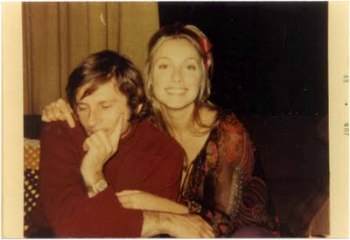
Sharon Tate & Roman Polanski
While these incidents may lend to the mystique of Rosemary's Baby, plenty of material within the film help make it one of the better horror films in history. Ironically, for a film that is classified as horror, there is almost no actual blood, gore, or scary stuff onscreen. And that's the magic of Polanski's film, for the real terror is created in your mind.
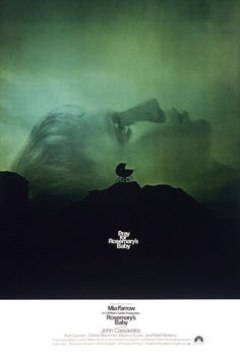
Rosemary's Baby, poster
For the score, Polanski turned once again to his frequent collaborator Krzysztof Komeda, with whom he’d previously collaborated on Knife in the Water, Cul-De-Sac, and most notably, The Fearless Vampire Killers. Komeda, already well-established as a serious talent in the avant-garde jazz scene in Europe, brought to Rosemary’s Baby an iconic lullaby theme, an approach mimicked in many subsequent horror scores. The film’s unnerving centerpiece is the hallucinatory sequence in which Rosemary (Mia Farrow) is impregnated by her husband – or, perhaps, by something else. Komeda scores Rosemary’s feverish, drug-induced dream with tense, seesawing strings and plucked bass notes, leading into a soft, demonic chant as her horror – and helplessness – intensifies into a sexually-charged nightmare.
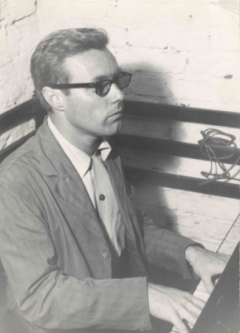
Krzysztof (Christopher) Komeda
Krzysztof (Christopher) Komeda, born in Poznan in 1931, took piano lessons since his childood and his first dreams were to be a famous virtuoso. But the war upset his plans.
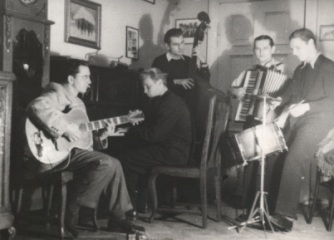
Komeda and friends, jam session, 1953
He got interested in entertainment and dance music before starting his studies. He went to secondary school at Ostrow Wielkopolski and there he met Witold Kujawski, a graduate of the same school who was already a well known swinging bass-player. It was Kujawski who initiated Komeda-Trzcinski into jazz. He took him to Cracow. It was the romantic period of Polish jazz, called 'the catacomb period'. There were no concert jazz audiences then. In Witold's legendary little room in Cracow, jam-sessions were held with the participation of such renowned musicians as Matuszkiewicz, Borowiec, Walasek and the host himself.
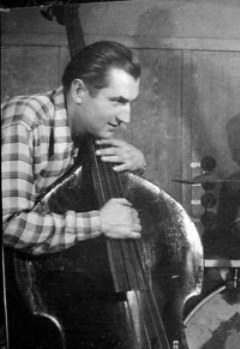
Witold Kujawski
Christopher Komeda's big time began back at the time of the I Sopot Jazz Festival in August 1956. During the thirteen years that passed since the I Festival, forms dominating Komeda's means of expression changed, but the main feature of his personality remained unchanged in its substance. It only matured, grew and crystallised. It turned into poetry.
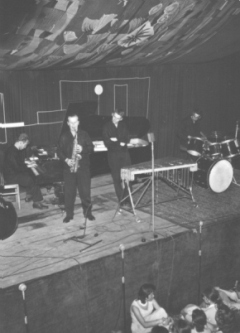
1st Jazz Festival in Poland, Sopot 1956
He found the individual expression of jazz in himself, in Slavic lyricism and in the traditions of Polish music. He was a master of a poetic atmosphere and knew how to conquer audiences better than most jazzmen did. It is impossible not to recognise his music: it has a unique sound. From 1956 to 1962 Komeda improved his piano and appeared at consecutive domestic festivals with his own band, always with an ambitious programme. Those were also the years of his Moscow, Grenoble and Paris successes - his first abroad. He was also the author of the interesting 'Jazz and Poetry' show presented at Jazz Jamboree'60 and later at the Warsaw Philharmonic Hall.
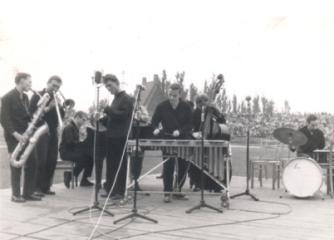
Komeda Sextet, 2nd Jazz Festival in Poland, 1957
In December 1967 he went to the USA. Tragically, Rosemary’s Baby was one of Komeda’s final works. Late in 1968, he sustained head injuries in a fall and returned to his native country; he died on April 23, 1969 in Warsaw, just a few days shy of his 38th birthday. Thankfully, his estate has kept his legacy going strong with a series of releases of his music. In addition to his striking and varied film music, Komeda’s innovative jazz recordings are highly recommended; his album Astigmatic is an essential listen for jazz fans.
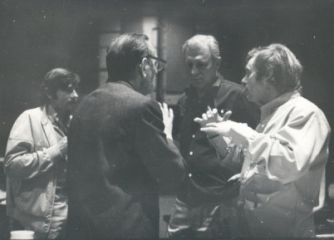
Recording session to Rosemary's Baby, Polanski (left), Komeda (right)
Mia Farrow only sung "la la la" as lyrics to the song in the movie.
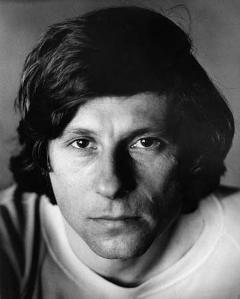
Roman Polanski
Maria Gabler wrote words to the lullaby:
“Rosemary`s lullaby"
Hush little baby Angels will tuck you to sleep Have no illusions Nightmares will haunt you in dreams Under devil`s loving care Nothing`s right and nothing`s fair World will rock your little cradle Down to hell Hush little baby But keep your blue eyes wide open Don`t trust the wise men Too many lies have been spoken May your life turn out to be Better than Rosemary`s Hush my baby , close your eyes And go to sleep
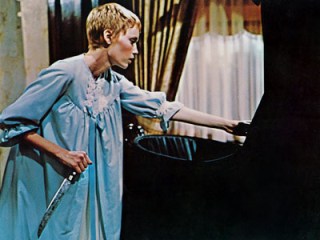
Mia Farrow as Rosemary
Last Updated (Saturday, 14 March 2015 13:14)
